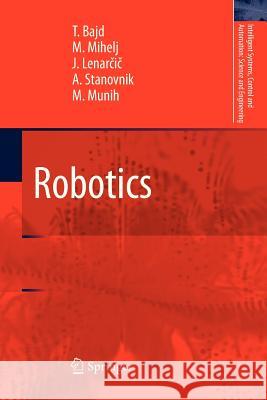Robotics » książka
Robotics
ISBN-13: 9789400731578 / Angielski / Miękka / 2012 / 152 str.
Robotics
ISBN-13: 9789400731578 / Angielski / Miękka / 2012 / 152 str.
(netto: 186,11 VAT: 5%)
Najniższa cena z 30 dni: 192,74 zł
ok. 20 dni roboczych.
Darmowa dostawa!
The word robot does not originate from a science or engineering vocabulary. It was rst used in the Czech drama R.U.R. (Rossum s Universal Robots) written by Karel Capek and was rst played in Prague in 1921 (the word itself was invented by his brother Josef). In the drama the robot is an arti cial human being which is a brilliant worker, deprived of all unnecessary qualities: feelings, creativity and capacity for feeling pain. In the prologue of the drama the following de nition of robots is given: Robots are not people (Roboti nejsou lide). They are mecha- cally more perfect than we are, they have an astounding intellectual capacity, but they have no soul. The creation of an engineer is technically more re ned than the product of nature. The textbook Robotics evolved through more than 10 years of teaching robotics at the Faculty of Electrical Engineering, of the University of Ljubljana, Slovenia. The way of presenting the rather demanding subject was successfully tested with several generations of undergraduatestudents."
This introductory text treats the following subjects: the basic characteristics of industrial robot mechanisms; the pose and movement of an object, which are described by homogenous transformation matrices; a geometric model of robot mechanism; a short introduction into kinematics and dynamics of robots; robot sensors and the planning of robot trajectories; basic control schemes resulting in either desired end-effector trajectory or force; robot grippers and feeding devices, which are described together with the basics of robot vision; the planning of robot assembly; and finally, robot standards and safety are briefly dealt with. The book concludes with a glossary in English, French and German.§This volume is supplementary reading for courses in robotics or industrial robotics and requires minimal knowledge of physics and mathematics.











